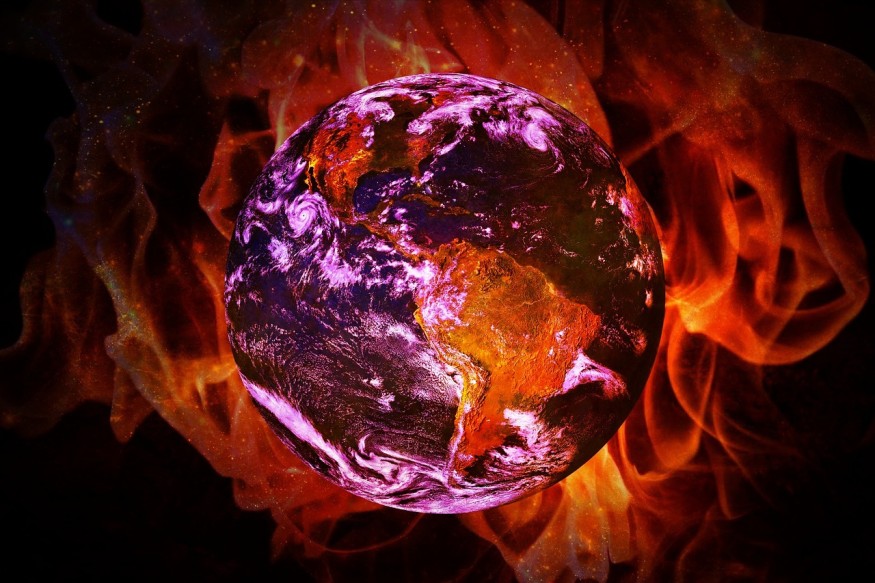
This week, Climate Explained answers two similar questions.
If humans had not contributed to greenhouses gases in any way at all, what would the global temperature be today, compared to the 1800s before industrialisation?
and
My question is what happens when all the greenhouse gases are eliminated? What keeps the planet from cooling past a point that is good?
Earth’s atmosphere is a remarkably thin layer of gases that sustain life.
The diameter of Earth is 12,742km and the atmosphere is about 100km thick. If you took a model globe and wrapped it up, a single sheet of tissue paper would represent the thickness of the atmosphere.
The gases that make up Earth’s atmosphere are mostly nitrogen and oxygen, and small quantities of trace gases such as argon, neon, helium, the protective ozone layer and various greenhouse gases – so named because they trap heat emitted by Earth.
The most abundant greenhouse gas in Earth’s atmosphere is water vapor--and it is this gas that provides the natural greenhouse effect. Without this and the naturally occurring quantities of other greenhouse gases, Earth would be about 33℃ colder and uninhabitable to life as we know it.
Changing Earth’s atmosphere
Since pre-industrial times, human activities have led to the accumulation of greenhouse gases such as carbon dioxide, methane and nitrous oxide in the atmosphere. The concentration of atmospheric carbon dioxide has risen from about 280 parts per million (ppm) before the first industrial revolution some 250 years ago, to a new high since records began of just over 417ppm. As a result of continued increases, the global average temperature has climbed by just over 1℃ since pre-industrial times.
While these long-lived greenhouse gases have raised Earth’s average surface temperature, human activities have altered atmospheric composition in other ways as well. Particulate matter in the atmosphere, such as soot and dust, can cause health problems and degrades air quality in many industrialised and urban regions.
Particulate matter can partially offset greenhouse gas warming, but its climate effects depend on its composition and geographical distribution. Climate in the southern hemisphere has also been affected by chlorofluorocarbons (CFCs), which led to the development of the Antarctic ozone hole.
If people had not altered the composition of the atmosphere at all through emitting greenhouse gases, particulate matter and ozone-destroying CFCs, we would expect the global average temperature today to be similar to the pre-industrial period – although some short-term variation associated with the Sun, volcanic eruptions and internal variability would still have occurred.
In a world that is about 1℃ warmer than during pre-industrial times, New Zealand is already facing the environmental and economic costs associated with climate change. The former head of the UN Framework Convention on Climate Change (UNFCCC), Christiana Figueres, argues that with trillions of dollars being spent around the world in economic stimulus packages following the COVID-19 pandemic, we need strong commitments to a low-carbon future if the world is to limit warming to 1.5℃ above pre-industrial levels.
What needs to happen
Greenhouse gases have long lifetimes – about a decade for methane and hundreds to thousands of years for carbon dioxide. We will need to reduce emissions aggressively over a sustained period, until their abundance in the atmosphere starts to decline.
When New Zealand entered the Level 4 coronavirus lockdown in March 2020, almost two weeks passed (the incubation period of the virus) before the number of new cases started to decline. Waiting for atmospheric carbon dioxide concentrations to decrease, even while we reduce emissions, will be similar, except we’ll be waiting for decades.
It is very unlikely that we could ever reduce greenhouse gas concentrations to the point that it becomes dangerous for life as we know it. Doing so would involve overcoming the natural greenhouse effect.
Recent research into greenhouse gas emission scenarios provides guidance on what will need to happen to stabilise Earth’s temperature at 1.5℃ above pre-industrial levels. A rapid transition away from fossil fuels toward low-carbon energy is imperative; some form of carbon dioxide capture to remove it from the atmosphere may also be necessary.
Short-term and scattered climate policy will not be sufficient to support the transitions we need, and achieving 1.5℃ will not be possible as long as global inequalities remain high.
Climate Explained is a collaboration between The Conversation, Stuff and the New Zealand Science Media Centre to answer your questions about climate change.
If you have a question you'd like an expert to answer, please send it to climate.change@stuff.co.nz
This article is republished from The Conversation under a Creative Commons license. Read the original article. | Laura Revell, Senior Lecturer in Environmental Physics, University of Canterbury
© 2025 NatureWorldNews.com All rights reserved. Do not reproduce without permission.





